| Author | Message | ||
Ulyssesguy |
Ok so this idea was formed in response to CityXslicker's need for extra ground clearance and his abuse of one of the last Buell race pipes out there... The internal muffler baffles were patterned after a flowmaster muffler and we ended up with a flat bottom CityX can and gained about 2 1/4" more ground clearance... And that gives about 7 1/4" unladen clearance and about 6" with a rider... 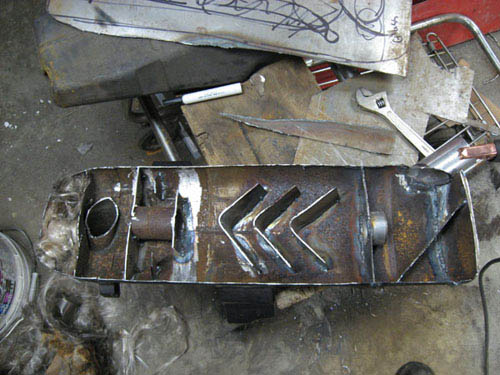 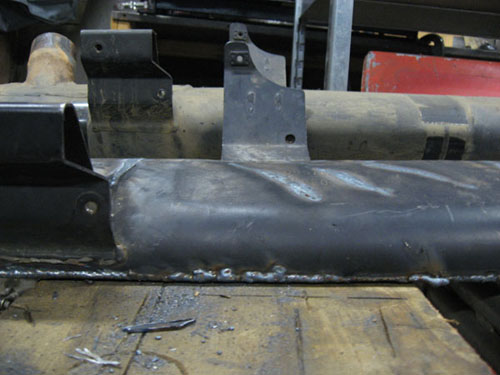 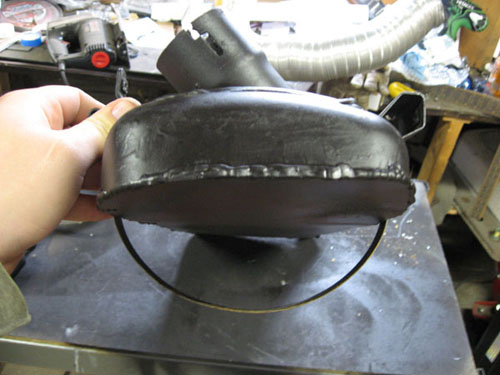 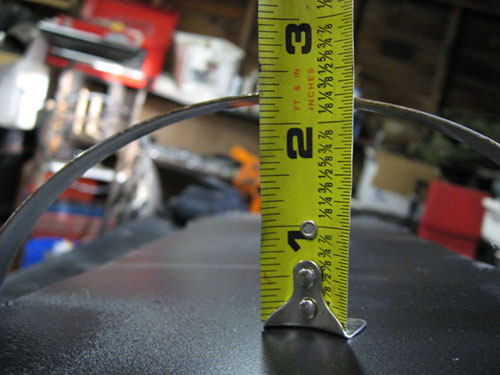 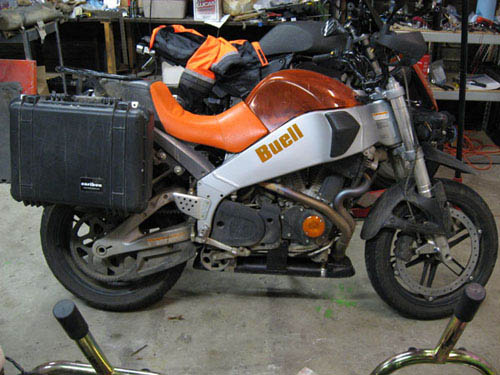 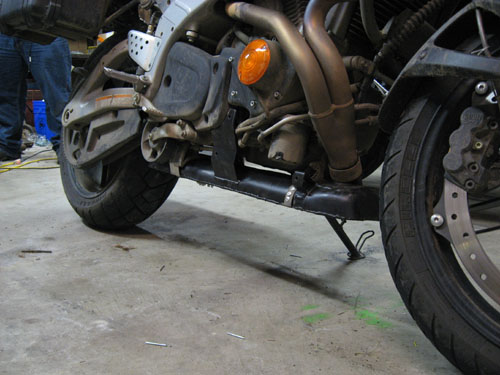 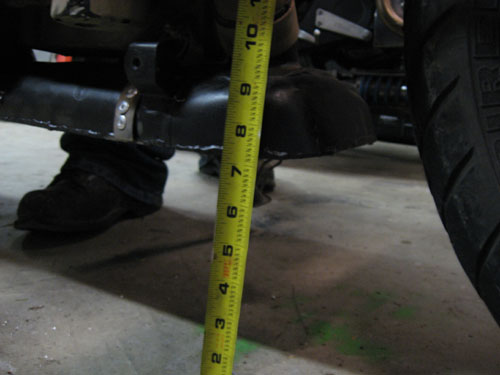 | ||
Ft_bstrd |
Interesting. How's it sound? Any change in performance? | ||
Bertotti |
Yea do tell, performance changes and mpg? | ||
Reepicheep |
Cool! Shoulda replaced the bottom with treadplate!  | ||
Electraglider_1997 |
Why not run a straight pipe since I see no packing?? | ||
Debueller |
Quote: Why not run a straight pipe since I see no packing?? Having packing in a muffler is not necessary to keep it somewhat quiet. I use a pair of flowmaster mufflers on my truck and they are definetly much quiter that a pair of straight pipes. Cityx's home built kind of resimbles a flowmaster. Note there is no packing in a flowmaster:  I would be kind of courious as to how it sounds and works for him. (Message edited by debueller on November 13, 2007) (Message edited by debueller on November 13, 2007) (Message edited by debueller on November 13, 2007) | ||
Reepicheep |
Cool! Now if only there was not such a strong market for stock pipes. It would be fun welding project. I rebuilt a gutted KLR-250 exhaust back to stock (near as I could manage). It was a lot of fun. | ||
Hughlysses |
The theory with Flowmaster mufflers is that they split each exhaust pulse into two equal pulses, then make one of those pulses 180 degrees out of phase with the other. This SHOULD cause them to cancel out. It's a neat idea, which appears to work at least to some extent. At any rate, that's a great idea for a muffler mod; let us know how it works out. | ||
Terrible1one3 |
All that routing and all those tabs create back pressure. Straight pipes create minimal back pressure, which with the buell efi system makes it run like crap. The back pressure is essential to quality running and low to mid range power. Straight pipes give you great high end, but that's about it. | ||
Ulyssesguy |
I thought it would be a good prototype and give the height challenged at least 2"... It sounds a lot like a Drummer or Spec-Ops pipe with a little tinny sound thrown in... I think the tinniness comes from the baffles not being welded to the bottom plate. I think i might fix this later... I did keep the packing in the nose and added some in the angled section at the rear opposite the exhaust... The bottom plate is about 2.5x thicker than the rest or the can and should stand up to some abuse... I didn't use diamond plate on the bottom because it might need to slide over something and i didn't want it to have any more resistance than it already did... As for a millage report and in the seat sound report i'll let CityXslicker post up that because i have no idea... Oh I almost forgot anyone want to buy a used and slightly dented 9x race can? Pictures of the dented can are coming soon... | ||
Cityxslicker |
Its loud, its raspy, and my neighbor has already complained ! as for ground clearance, there is mud to be had tomorrow nite, going puddle huntin, mud muckin and dirt scootin. A lil bit of idle issues when cold, wants to fall below 1000 rpm. But it solves the problem for me, I cant wait to field test it fully. Thanks Dann-o! Ps if nobody buys the exhaust I might just use it as my "in-bin" at work | ||
Cityxslicker |
Ummm back pressure, its a Biatch. Here is the result. 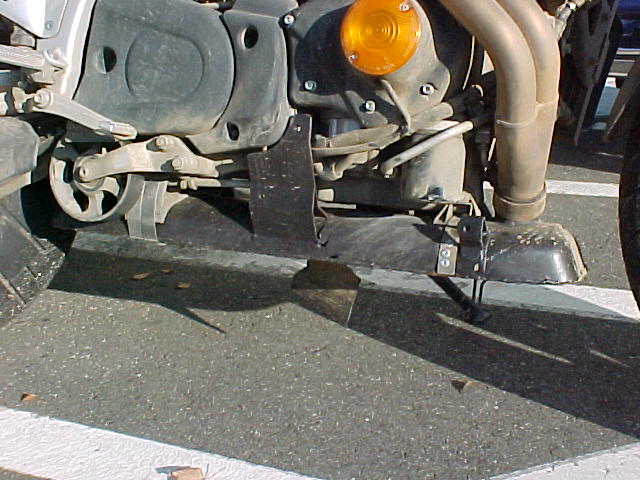 yes that triangle hanging down is a chunk of the exhaust bottom. Now was it the back pressure that did it, or the more aggressive hoopdees that I tackled last nite with my new improved ground clearance. Ponderous. | ||
Reepicheep |
COOL! I have an old KLR-250 exhaust can... it is heavy steel and fairly flat. With enough header surgery, it would probably pack under there and be pretty tough. I bet you could find something like a stock XR-650 exhaust, which are probably a dime a dozen on ebay, and graft on an appropriately sized header pipe on to it, and use it. You might loose some top end, but that might be fine for your application. | ||
Cityxslicker |
hmmmm ponderous, the winter is a dangerous time to have the bike in the garage. Wondering if a set of siamese pipes would work. 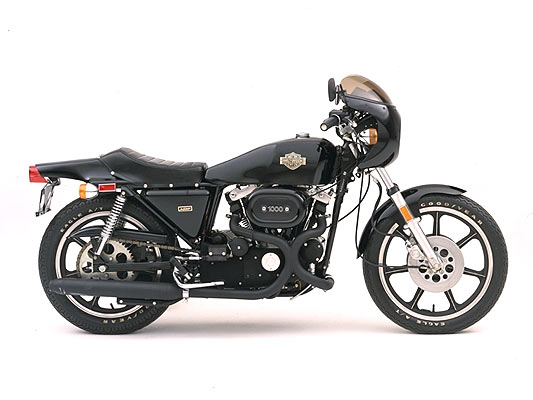 | ||
Sub65chris |
holy crap you blew the bottom out? I guess i didnt realize that theere could be that much back pressure. Is your outlet to small and if so could you cause damage to the valves? to much thinking head hurts. | ||
Blake |
Backpressure improving performance is a myth. It only hurts performance. Back when valves and valve seats were not as robust as they are today, backpressure (a restrictive exhaust tract) would help prevent the exhaust valve and seat from burning up. It did so by hindering performance. Exhaust tract influence upon engine performance concerns optimally timing the arrival of a negative pressure wave at the exhaust valve during the intake and exhaust cam overlap event. The negative pressure wave aids in evacuating the combustion chamber and pulling in additional air/fuel charge. The arrival of a positive pressure wave has the opposite effect, hindering evacuation of the combustion chamber, and pushing incoming air/fuel charge out. A straight pipe will only work optimally at a very narrow range of engine rpm. However, a straight pipe can be cut to length to work optimally at whatever engine speed you like, not just the high end. Back pressure is alternative to saying "resistance to flow". What blows out portions of an exhaust tract is plain old regular escaping combustion pressure, or exhaust pressure. Nothing "back" about it. Don't breath too much exhaust. It'll set you back. ![: ]](http://www.badweatherbikers.com/buell/clipart/proud.gif) | ||
Reepicheep |
Blake... is there a significant benefit available also from the positive pressure wave? I think I have heard that there was. I thought you could time it such that you had what appeared to be a steeper cam profile... where the cam is actually opening the exhaust valve a little early, but the positive pressure wave is making it still appear "closed". I can see it in theory, and maybe it made sense when valve trains were really slow and heavy. But with new materials and in current practice, it seems like it would be of limited benefit and pretty tricky to line up all those ducks. | ||
Xbimmer |
Geez those XLCR's are cool. That one's about ready to have a catastrophic rear tire failure though...  | ||
Blake |
I've not ever heard that before Reep, but it makes sense to me. The difference in the pressures would seem to make that effect somewhat negligible. Meaning a couple few PSIG in positive exhaust tract positive pressure versus hundreds of PSIG in the combustion chamber eager to escape. It would have some effect for sure, but not anywhere near as much as the scavenging effect boosts volumetric efficiency where combustion chamber pressure at the beginning of the intake stroke is much much less. | ||
Reepicheep |
Thats what I was thinking Blake. In theory, I can see how it could have an effect, but in practice it seems like it would be extremely minor relative to a cam and a valve just doing what cams and valves do. | ||
Imonabuss |
I'll bet it was the fact it was so flat. The first TZ700 Yamahas had all four chambers under the bike and they made them like pancakes to get them to fit. They would only go about 100 miles before the sides blew out like that. Muffler walls need to have arch in them to keep from resonating and pulsing in and out which fatigues the metal. Maybe when you fix it you could put some curve in iut, or weld a few braces to stiffen it? |